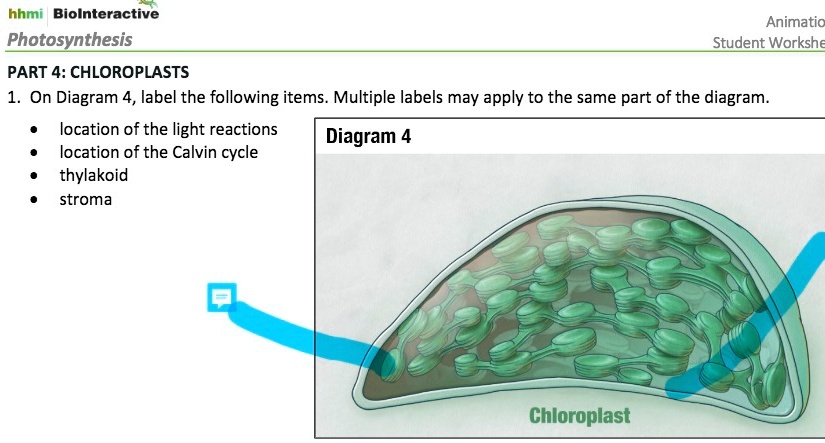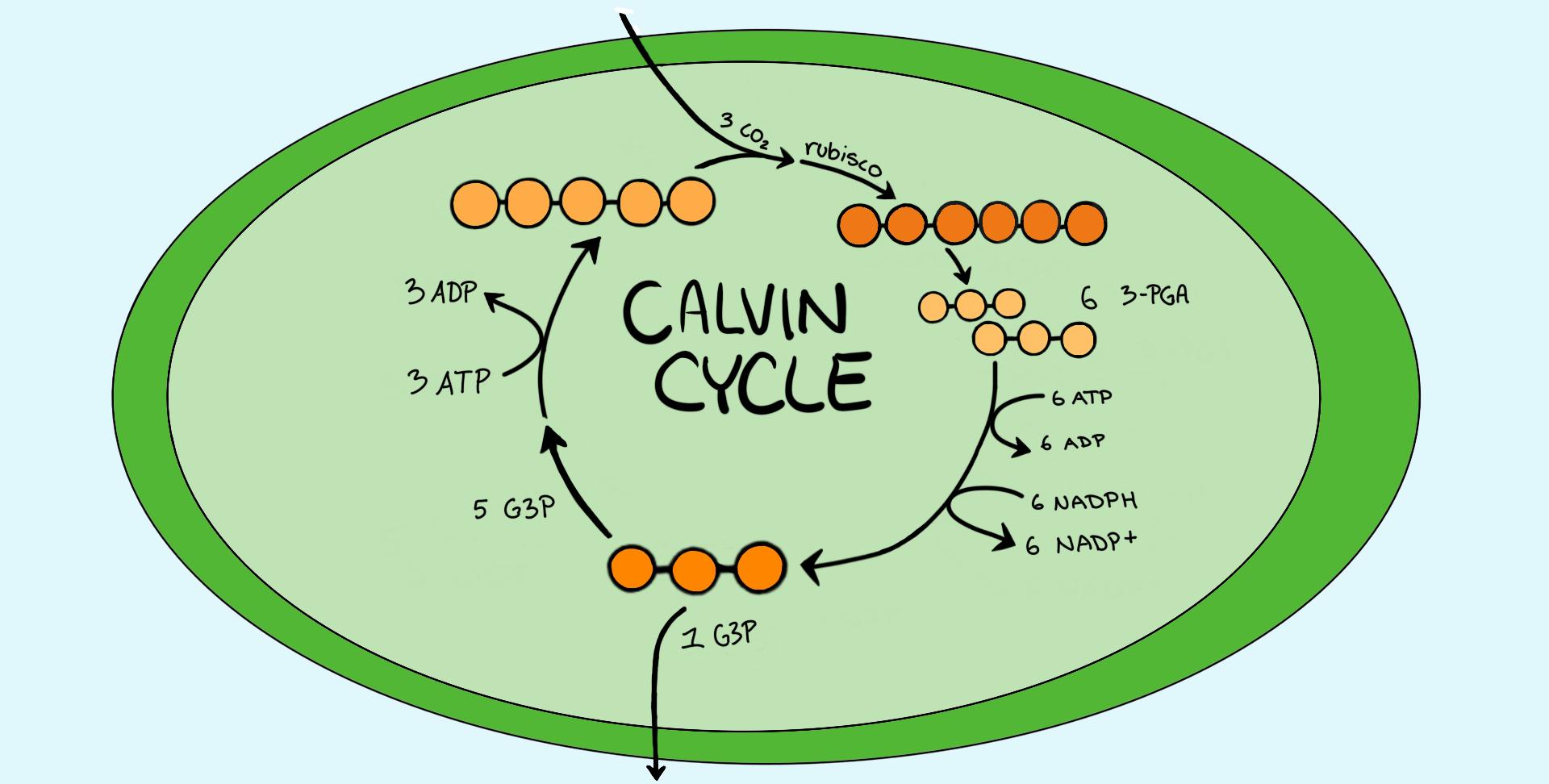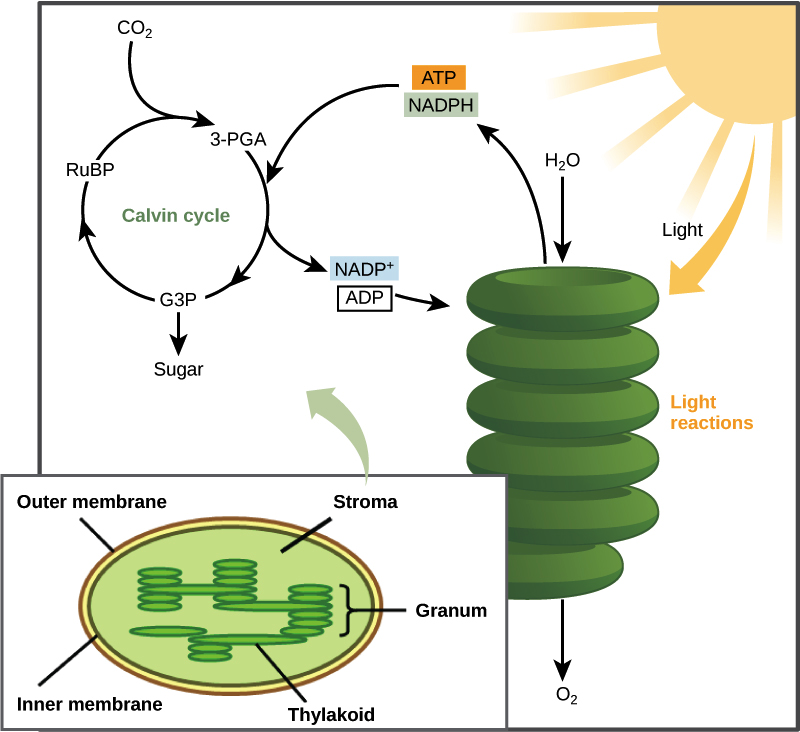Does the Calvin Cycle happen in the stroma? This question delves into the heart of photosynthesis, the process by which plants convert sunlight into energy. The Calvin Cycle, also known as the light-independent reactions, is a crucial stage in this process, responsible for converting carbon dioxide into sugar. The stroma, a fluid-filled region within chloroplasts, provides the necessary environment for these reactions to occur.
Imagine a bustling factory where sunlight is the raw material and sugar is the final product. The chloroplast is the factory, the thylakoid membranes are the production lines, and the stroma is the assembly line. The Calvin Cycle, like a well-oiled machine, operates within the stroma, utilizing the energy generated during the light-dependent reactions to assemble sugar molecules. This intricate dance of molecules and reactions is vital for life on Earth, as it forms the foundation for the food chain.
The Calvin Cycle

The Calvin cycle, also known as the light-independent reactions, is a crucial part of photosynthesis. It’s the process where plants use the energy captured from sunlight during the light-dependent reactions to convert carbon dioxide into sugar, which is the primary source of energy for the plant. It’s like the plant’s kitchen, where they cook up their food using the ingredients they gathered earlier.
Overview of the Calvin Cycle
The Calvin cycle occurs in the stroma of the chloroplast, a fluid-filled space outside the thylakoid membranes. It’s a cyclical process with three main stages: carbon fixation, reduction, and regeneration.
- Carbon Fixation: This stage starts with the enzyme RuBisCo, which binds carbon dioxide to a five-carbon sugar called ribulose bisphosphate (RuBP). This forms an unstable six-carbon compound that quickly splits into two molecules of 3-phosphoglycerate (3-PGA), a three-carbon compound. It’s like the plant grabbing carbon dioxide from the air and combining it with an existing molecule to create a new one.
- Reduction: The 3-PGA molecules are then converted into glyceraldehyde 3-phosphate (G3P) using energy from ATP and reducing power from NADPH, both produced in the light-dependent reactions. G3P is a three-carbon sugar that is a key building block for other organic molecules. It’s like the plant using the energy it stored from sunlight to transform the 3-PGA into a more useful sugar.
- Regeneration: Some of the G3P molecules are used to create glucose, but most are recycled to regenerate RuBP. This ensures the cycle can continue and fix more carbon dioxide. It’s like the plant using some of the sugar to build itself and storing the rest to keep the cycle going.
Importance of Carbon Dioxide Fixation
Carbon dioxide fixation is the most crucial step in the Calvin cycle. It’s the process where inorganic carbon dioxide is incorporated into an organic molecule, creating the basis for all organic compounds in the plant. It’s like the plant taking carbon from the air and turning it into food.
Carbon dioxide fixation is essential for life on Earth because it is the process by which plants convert atmospheric carbon dioxide into organic compounds that are used as food by all living organisms.
The Stroma

The stroma is the fluid-filled region that surrounds the thylakoids in chloroplasts. It’s like the cytoplasm of the chloroplast, but with a special twist! It’s where the Calvin cycle, the second stage of photosynthesis, happens.
The Structure and Function of the Chloroplast Stroma
The stroma is a complex environment that contains a variety of enzymes, proteins, and other molecules that are essential for the Calvin cycle. It’s basically a busy workshop where the magic of converting carbon dioxide into sugar happens.
- Enzymes: The stroma houses a bunch of enzymes that are specific to the Calvin cycle. These enzymes act like little helpers, speeding up the reactions that make the cycle work.
- Ribulose bisphosphate carboxylase/oxygenase (RuBisCo): This enzyme is a major player in the Calvin cycle. It’s responsible for grabbing carbon dioxide from the air and attaching it to a sugar molecule, which is the first step in making glucose.
- Other molecules: The stroma also contains other important molecules like ATP and NADPH, which are energy carriers produced during the light-dependent reactions. These energy carriers fuel the Calvin cycle, making it possible to convert carbon dioxide into sugar.
The Stroma Provides a Suitable Environment for the Calvin Cycle, Does the calvin cycle happen in the stroma
The stroma provides a perfect environment for the Calvin cycle to occur. It’s like a cozy little room where all the ingredients and tools needed for the cycle are present.
- Water: The stroma is full of water, which is essential for many of the chemical reactions that occur in the Calvin cycle.
- pH: The stroma maintains a specific pH, which is optimal for the enzymes involved in the Calvin cycle to work efficiently.
- Temperature: The stroma also maintains a suitable temperature for the enzymes to function at their best.
Comparing the Stroma and Thylakoid Lumen
The stroma and the thylakoid lumen are two distinct compartments within the chloroplast, each with a unique role in photosynthesis.
- Stroma: The stroma is where the Calvin cycle takes place. It’s the site of carbon fixation, where carbon dioxide is converted into sugar. The stroma is like the factory floor where the sugar is made.
- Thylakoid lumen: The thylakoid lumen is the space inside the thylakoids. It’s where the light-dependent reactions of photosynthesis occur. This is where light energy is captured and used to produce ATP and NADPH. The thylakoid lumen is like the power plant that generates the energy needed to run the factory.
Stages of the Calvin Cycle: Does The Calvin Cycle Happen In The Stroma

The Calvin cycle, also known as the Calvin-Benson cycle, is a series of biochemical reactions that take place in the stroma of chloroplasts during photosynthesis. This cycle is responsible for converting carbon dioxide into sugar, which is then used by the plant for growth and energy production. The Calvin cycle is divided into three main stages: carbon fixation, reduction, and regeneration.
Carbon Fixation
In the first stage of the Calvin cycle, carbon dioxide from the atmosphere is incorporated into an organic molecule. This process is catalyzed by the enzyme RuBisCo (ribulose-1,5-bisphosphate carboxylase/oxygenase). RuBisCo combines carbon dioxide with a five-carbon sugar called ribulose-1,5-bisphosphate (RuBP), forming an unstable six-carbon compound that immediately splits into two molecules of 3-phosphoglycerate (3-PGA). This is the only step in the Calvin cycle that uses carbon dioxide.
Reduction
The second stage of the Calvin cycle involves the reduction of 3-PGA to glyceraldehyde-3-phosphate (G3P). This process requires energy from ATP and reducing power from NADPH, both of which are produced during the light-dependent reactions of photosynthesis. The reduction of 3-PGA to G3P is a two-step process. First, 3-PGA is phosphorylated by ATP to form 1,3-bisphosphoglycerate. Second, 1,3-bisphosphoglycerate is reduced by NADPH to form G3P.
Regeneration
The final stage of the Calvin cycle involves the regeneration of RuBP. This process ensures that the cycle can continue. G3P is used to regenerate RuBP, which is then available to combine with more carbon dioxide. The regeneration of RuBP is a complex series of reactions that involve several intermediates.
The Calvin Cycle and Photosynthetic Efficiency
The Calvin cycle is the core of photosynthesis, responsible for converting carbon dioxide into sugars, the building blocks of life. Its efficiency plays a crucial role in determining how much energy a plant can capture from sunlight.
Factors Influencing the Rate of the Calvin Cycle
The rate of the Calvin cycle is influenced by several factors:
- Light Intensity: Higher light intensity increases the rate of the Calvin cycle as it provides more energy for the reactions.
- Carbon Dioxide Concentration: Higher carbon dioxide concentration increases the rate of the Calvin cycle, as it provides more substrate for the reactions.
- Temperature: The Calvin cycle has an optimal temperature range. Too low or too high temperatures can slow down the rate of the reactions.
- Water Availability: Water is essential for the Calvin cycle, and its availability can significantly affect the rate of the reactions.
The Calvin Cycle in Different Types of Plants
Plants have evolved different strategies to optimize photosynthesis in various environments. These strategies are reflected in the adaptations of the Calvin cycle:
- C3 Plants: Most plants are C3 plants, where the first stable product of carbon fixation is a three-carbon compound called 3-phosphoglycerate. These plants are efficient in moderate conditions but can experience photorespiration, a process that reduces photosynthetic efficiency in hot, dry climates.
- C4 Plants: C4 plants have evolved a mechanism to minimize photorespiration. They initially fix carbon dioxide into a four-carbon compound, which is then transported to specialized cells where the Calvin cycle takes place. This allows C4 plants to thrive in hot, dry environments.
- CAM Plants: CAM plants, like cacti and succulents, open their stomata at night to take in carbon dioxide and store it as a four-carbon compound. During the day, they use this stored carbon dioxide for the Calvin cycle, allowing them to conserve water in arid conditions.
Understanding the location of the Calvin Cycle within the chloroplast stroma is essential for grasping the intricacies of photosynthesis. The stroma, with its unique composition and enzymes, provides the ideal environment for the Calvin Cycle to efficiently convert carbon dioxide into sugar. This process, a cornerstone of life on Earth, showcases the remarkable efficiency and elegance of nature’s design. The next time you enjoy a sweet treat, remember the intricate workings of the Calvin Cycle, happening within the stroma of plant cells, that made it possible.
Frequently Asked Questions
What is the role of the Calvin Cycle in photosynthesis?
The Calvin Cycle is the light-independent stage of photosynthesis where carbon dioxide is converted into sugar, using the energy produced during the light-dependent reactions.
What are the key enzymes involved in the Calvin Cycle?
Key enzymes include RuBisCo, which fixes carbon dioxide, and others involved in the reduction and regeneration stages.
How does the Calvin Cycle contribute to photosynthetic efficiency?
The Calvin Cycle effectively utilizes the energy generated by the light-dependent reactions to produce sugar, contributing to the overall efficiency of photosynthesis.






